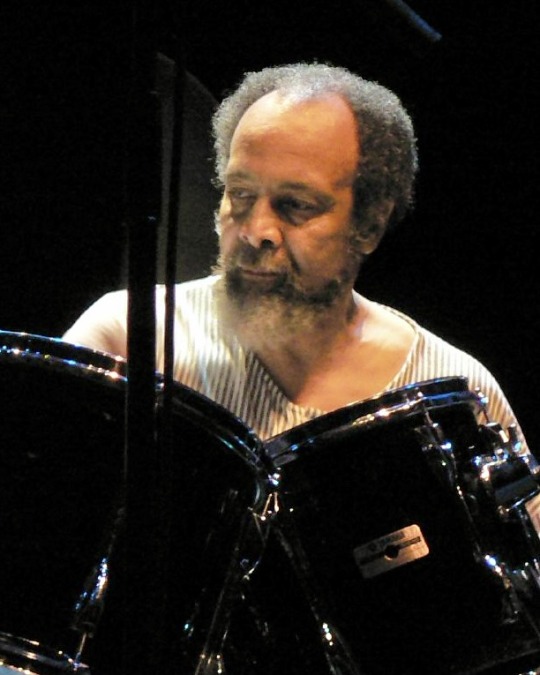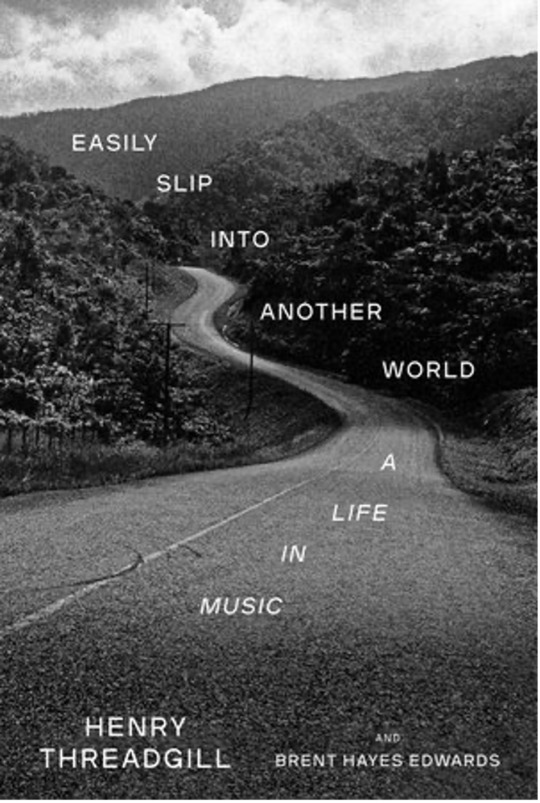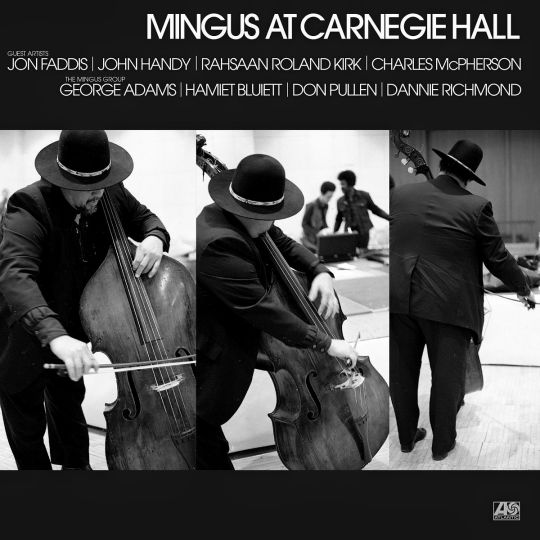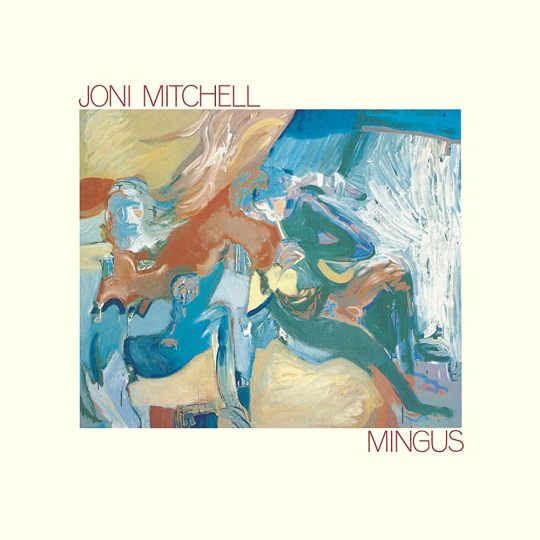#don pullen
Explore tagged Tumblr posts
Text

#charles mingus#mingus at carnegie hall#c jam blues#dannie richmond#don pullen#hamiet bluiett#rahsaan roland kirk#george adams#john handy#charles mcpherson#jon faddis
27 notes
·
View notes
Text
youtube
3 notes
·
View notes
Text
youtube
milford graves / don pullen -- p.g. V [live, april 1966]
5 notes
·
View notes
Text
Classic from 1993
3 notes
·
View notes
Text
A Year Of Songs #11 - “Gratitude” by the Don Pullen Quintet

To convey emotion and feeling in a palpable way without words is one of music’s supreme virtues - to supersede language and thus offer momentary passage to more universal forms of communication, a melodic despoiler of the Tower of Babel’s great schism.
On 1985’s quietly stellar The Sixth Sense album, pianist Don Pullen and alto saxophonist Donald Harrison approach the broad idea of “Gratitude” in a hushed after hours conversation - delicate, warmly sentimental, gently tearful, a beautiful dance of nostalgia and yearning. There’s some of Vince Guaraldi’s tintinabulous grace over this nearly 8-minute sighing thank you.
youtube
0 notes
Text
youtube
The duo of my father and pianist Don Pullen. Live audio recording from d.c. space, Washington DC, May 6, 1979.
0 notes
Text
Milford Graves: Exploring the Rhythms of Life Through Music and Science
Introduction: Milford Graves, a name that resonates in the realms of both avant-garde jazz and scientific exploration, stands as a testament to the boundless creative spirit that transcends conventional boundaries. A percussionist, drummer, educator, and groundbreaking researcher, Graves’ influence stretches across music, medicine, and the very essence of human existence. This blog post delves…

View On WordPress
0 notes
Text
Listed: Kid Millions and Sarah Bernstein

Photo by Caleb Bryant Miller
Kid Millions and Sarah Bernstein both have long CVs in experimental music, Millions as the drummer for Oneida and Man Forever and Bernstein as an avant garde composer and performer with the VEER Quartet, the avant-jazz Sarah Bernstein Quartet, and solo as Exolinger. They’ve been improvising together for roughly a decade, building mesmerizing sonic architectures out of free-form drumming, wild violin pyrotechnics and cryptic spoken word. Of their latest, Live at Forest Park, Margaret Welsh writes, “Bernstein and Colpitts weave sound together into an unsettling fever dream-like warp, growing larger and smaller. All you can do is lay back and surrender to the waves.” Here are some things that inspire the two.
Kid Millions
Billy Harper Quintet — In Europe (Soul Note)
youtube
While I admire and enjoy all of the Quintet albums I’ve heard, this particular one captures something ineffable and transcendent. The Quintet’s personnel changes throughout Harper’s career but this particular session has the tunes, the passion, the reaching and the constant surprises that make it my most listened to album in the last ten years. Fred Hersch is especially sympathetic and powerful on this too. I really want to see this group ASAP. Billy Harper is still playing!
Pete La Roca — Basra (Blue Note)
youtube
La Roca is a drummer who is unappreciated but his playing and compositions stand out. This album gets the slight nod over the legendary Turkish Women at the Bath because it was recorded well. He’s in the same league as Elvin and also wrote some incredible tunes.
George Adams & Don Pullen Quartet — City Gates (Timeless) (but any record is cool)
youtube
I’m leaning on big tenor sounds these days, and George Adams stands in the same universe as Billy Harper because he plays the range of the instrument — there are gorgeous melodies set alongside blistering free blasts. Don Pullen is incredible as well. Near the end of his life he started to write more songs with hooks, but he shreds like Cecil Taylor. I’m digging the stuff that straddles the line between songs and free these days.
Henry Threadgill with Brent Hayes Edwards — Easily Slip Into Another World (memoir)

This is a brand-new book, and I’m finding lots of inspiration and great advice within the pages. His discussion about how young musicians need to find their way within the tradition, among their peers, and on their own terms applies to all traditions, rock included. In order to really engage with the music, you have to play all the time, with other people. You have to play covers, and you have to play in front of audiences. And you need to be fired. I certainly have!
Marcus Gilmore
youtube
Such an incredible, deep, drummer. You should go see him ASAP!
Sarah Bernstein
Music/poetry films I like:
When It Rains — Charles Burnett (1995)
youtube
Charles Burnett’s work speaks to me as a whole. The films I’ve seen slip into a continuous flow of poetic story/documentary. When It Rains is a 13-minute short film that takes place on a festive New Years Day, but January’s rent needs to be paid. Musicians are among the characters and sound, and it plays like a jazz improvisation. A particular highlight is seeing instrument-maker Juno Lewis on-screen playing his double bell trumpet. The story’s ending will have vinyl collectors smiling.
The Connection — Shirley Clarke (1961)
youtube
Before discovering this movie, I knew director Shirley Clarke from her later film "Ornette: Made in America," also a must-see. The Connection is a film version of Jack Gelber’s play for the burgeoning Living Theatre. Most of the actors from the stage play, and all the musicians, are also in the film. The band is swinging: Freddie Redd composer/pianist, Jackie McLean alto sax, Michael Mattos bass, Larry Ritchie drums. The musicians also act in the story, and even the turntable — playing Charlie Parker’s Marmaduke — provides a key recurring motif in the film.
Poetry In Motion — Ron Mann (1982)
vimeo
Poetry in Motion, By Ron Mann from bob stein on Vimeo.
The other movies on this list are ones I’ve seen relatively recently, but Poetry In Motion I watched in an art-house cinema as a teenager, and it had a big impact on me. The documentary shows 40 poets and performers, including Jayne Cortez, Dianne Di Prima, Helen Adam, William S. Burroughs, Amiri Baraka, Allen Ginsburg, Jim Carroll, John Cage, Robert Creeley, Miguel Algarin, to name a few! Also check out Ron Mann’s first feature film: Imagine The Sound (1981), a superb profile of Cecil Taylor, Archie Shepp, Bill Dixon and Paul Bley.
Desolation Center — Stuart Swezey (2018)
youtube
The concert footage is so good. Highlights are Einsturzende Neubauten and Survival Research Labs literally blowing up the desert in Joshua Tree. Also Sonic Youth, Minute Men, Swans, all in DIY festivals and shows taking place in outdoor remote locations in 1980’s SoCal.
Amazing Grace — Alan Elliott/Sydney Pollack (2018)
youtube
Aretha Franklin and choir hold a live concert recording session of her gospel album Amazing Grace over two days in 1972. This is not a documentary with talking heads or explanation, rather the action is all in the music and spirit. Aretha Franklin’s genius and deep interaction with the listeners and choir is riveting and inspiring, even more so with repeat viewing.
#dusted magazine#listed#kid millions#sarah bernstein#billy harper quintet#pete la roca#george adams and don pullen quartet#henry threadgill#marcus gilmore#charles burnett#shirley clarke#ron mann#stuart swezey#alan elliott#sydney pollack
4 notes
·
View notes
Text

NYC 1989
I returned to New York City in 1989 and almost immediately found a job for myself there, photographing the artwork for a record my friend Jane Bunnett had recorded with jazz pianist Don Pullen. (My first record cover, I think.) I had tentatively tried my hand at street photography when I visited the city for the first time, four years earlier, but this job turned out to be a shakedown cruise for the Rolleiflex I'd recently purchased - a camera that would be basically my main portrait camera for the following decade. My then-girlfriend had just moved to the city for college so I had a place to stay, and I set out every day with a brief to collect photos that evoked NYC for the package of Jane's CD, which would be called New York Duets.



Over two trips to New York City in late summer and fall of 1989 I busied myself with taking shots of the city for my friend Jane's CD artwork, wandering through the Village where I was staying, north to Rockefeller Center and south to Wall Street, trying to find evocative shots that said "Manhattan!" without hitting the old cliches too hard. Those old cliches were hard to avoid in any case; I stayed away from Central Park, the Empire State and Chrysler buildings and the Statue of Liberty, but I still couldn't avoid other, just as obvious shots - the art deco friezes at Rockefeller Centre, fire escapes, graffiti, the Stock Exchange and the twin towers at the World Trade Center - the only photos I ever took of those iconic and tragically long-gone buildings, at sunset down at the end of West Broadway.





My New York City photos for my friend Jane Bunnett's record ended up doing the job: a shot from Rockefeller Center ended up on the cover, a few more made it on the inside and back cover of the booklet, and along the way I ended up with some photos I still like today. One shot in particular, of a group of men playing cards at the chess tables in Washington Square Park, has become a historical document; you don't see men dressed this way today, or faces like this. Most of the men in the photo are probably dead by now. I still find myself trying to take quintessential photos whenever I'm back in NYC today, but I'm old enough now that I don't care if I aim squarely for those iconic postcard shots, mostly because on the way between taking them you might find yourself finding something less obvious.





#rolleiflex#black and white#film photography#some old pictures i took#new york city#manhattan#world trade center#1989#jane bunnett#album cover#early work#rockefeller center
8 notes
·
View notes
Text

Don Pullen feat. Sam Rivers – Capricorn Rising
Capricorn Rising is an album by American jazz pianist Don Pullen featuring saxophonist Sam Rivers recorded in 1975 for the Italian Black Saint label.
The Allmusic review awarded the album 4½ stars.
Don Pullen – piano Sam Rivers – tenor saxophone, soprano saxophone, flute Alex Blake – bass Bobby Battle ��� drums, tambourine
2 notes
·
View notes
Text

#perdido#mingus at carnegie hall#charles mingus#charles mcpherson#john handy#hamiet bluiett#dannie richmond#don pullen#george adams#jon faddis#rahsaan roland kirk#1974
35 notes
·
View notes
Photo

Storia Di Musica #280 - Joni Mitchell, Mingus, 1979
Quando nel 1972 George Wein, celebre organizzatore del Festival di Newport, presentò Charles Mingus all’ora governatore della George, Jimmy Carter, futuro presidente degli Stati Uniti d’America, stava già su una sedia a rotelle, in una fase terribile della malattia di Gehring. Ma fu presentato come “il più grande jazzista vivente”. Qualche anno prima, non invitato dallo stesso Wein al Festival di Newport, organizzò un controfestival, con esibizioni notevolissime, girando in macchina con un megafono proprio nella stessa Newport, attirando non poche persone. Mingus negli anni ‘70 era appena tornato sulle scene, dopo il tracollo mentale dello sfratto e le cure psichiatriche. Eppure proprio in questi anni ci fu una riscoperta totale dei suoi dischi, anche perchè come sempre lui ci mise lo zampino: si mise in testa di poter far soldi con la Candid Records, una piccola casa discografica fondata nel 1960 dal critico e produttore Nat Hentoft e da Archie Bleyer, proprietario della casa discografica Cadence. Mingus auto assunse il ruolo di “direttore” e in 6 mesi registrò dischi favolosi, garantendo agli artisti totale libertà concettuale e artistica, ma non pagò musicisti, tecnici, firmò contratti stranissimi, tanto che durò tutto dall’agosto del ‘60 all’aprile del ‘61. Ma dagli anni ‘70 il catalogo completo fu ridistribuito con il marchio Barnaby della CBS, riaccendendo l’interesse su questo geniale quanto stranissimo musicista. Di questo periodo anche le sue ultime grandi composizioni, con il vulcanico quintetto di George Adams e Don Pullen, con cui registrò Changes One e Changes Two, tutti e due del 1975, con uno dei suoi ultimi grandi pezzi, Duke Ellington’s Sound Of Love. La sua quarta moglie, Sue, è il suo angelo custode, e proprio Sue gli porta un album di una cantante canadese, Don Juan's Reckless Daughter, che in quegli stessi anni, siamo nel 1977, stava sperimentando il canto jazz: Joni Mitchell. Affascinato dalla sua voce, Mingus la contatta e iniziano a parlare di una collaborazione. La prima idea è grandiosa, in pieno stile Mingus, musicare cioè i Quattro Quartetti di T. S. Eliot: Burnt Norton, East Coker, The Dry Salvages, e Little Gidding sono 4 racconti che il grande scrittore americano aveva pensato come sezioni simili ai tempi di un quartetto d’archi, da cui il nome, scritti prima e dopo lo scoppio della Seconda Guerra Mondiale, dal simbolismo ermetico e potentissimo. Joni Mitchell in un primo tempo rifiuta, poi Mingus lascia perdere Eliot e le regala sei composizioni autografe, chiamate Joni I-VI, a cui Mitchell dovrà aggiungere i testi. Siamo nella secondo metà del 1978, e Mingus per via della sua malattia si trasferisce con Sue a Cuernavaca, in Messico. Mitchell prova le canzoni con un gruppo di musicisti, ma non è convinta, così richiama il leggendario bassista e suo collaboratore nei dischi precedenti, Jaco Pastorius, a cui affianca un gruppo fenomenale: Wayne Shorter al sassofono soprano, Peter Erskine alla batteria, Don Alias alle congas, Emil Richards alle percussioni e il grande Herbie Hancock al piano elettrico. Prodotto dalla stessa Mitchell e registrato presso gli Electric Ladyland Studios di New York, Mingus esce nel giugno 1979. Mitchell aggiunge di suo God Must Be A Boogie Man è per voce, chitarra acustica e basso fretless di Pastorius e The Wolf That Lives In Lindsey, più particolare: lungo brano di voce e chitarra più, qua e là, congas (e ululati) e il jazz rock di God Must Be A Boogie Man. Nei brani scelti tra quelli scritti da Mingus, c’è altra magia: A Chair In The Sky è in quartetto con Hancock, Shorter, Pastorius ed Erskine, è uno degli ultimi gioiellini di Mingus, tra armonie complesse e delicate melodie, con Shorter sugli scudi e il lavoro eccellente di Pastorius in tessitura strutturale. Sweet Sucker Dance è quasi swing; The Dry Cleaner From Des Moines è un saltellante blues con tanto di sezione fiati (arrangiata da Pastorius). Il brano decisamente più emozionante è quello che chiude il disco, la magnifica ballata del 1959 che Mingus dedicò a Lester Young, Goodbye Pork Pie Hat: sempre in quartetto, Joni Mitchell fornisce una stupenda esposizione melodica cantando anche la prima, lunga, parte del bellissimo assolo di sax tenore presente nell’originale del 1959. La Mitchell qui come cantante si è superata, e ci ha donato una preziosa versione di questo immortale brano di Mingus. Tra i brani, si intervallano delle parti di dialoghi buffi e scanzonati, segnati sul libretto come Rap, tra Mingus, amici e vari musicisti. Il disco fu un fiasco commerciale, e anche la critica non seppe capirlo all’epoca. Tuttavia per tutti i musicisti, fu uno dei lavori più cari per vari motivi, non ultimo quello che successe di lì a poco. Appena quasi tutti i brani erano pronti, tranne God Must Be a Boogie Man, furono mandati a Mingus a Cuernavaca, a fine 1978. Mingus fece appena in tempo ad ascoltarli, perchè il 5 gennaio del 1979 muore stroncato da un infarto. Il disco uscirà nel giugno 1979. E nelle note di copertina di Mingus, Joni Mitchell racconta questa storia, che si pensava fosse una leggenda di sua invenzione, ma che alla fine si rivelò vera: nello stesso giorno della sua morte, in una Baia non lontana da Cuernavaca, una mareggiata spiaggiò diversi capodogli. Erano 56, 56 come gli anni di Charles Mingus. Il giorno dopo, come da sua volontà, il suo corpo venne cremato e le sue ceneri verranno poi depositate nel Gange. Nello stesso giorno della cremazione, anche le carcasse dei capodogli vennero bruciate in colossali pire sulla spiaggia. Leggenda vuole che le fiamme facessero nel cielo delle piccole M: l’ultima leggenda di Charles Mingus, genio della musica.
22 notes
·
View notes
Text
GEORGE ADAMS - DON PULLEN QUARTET / LIVE AT VILLAGE VANGUARD
#music#vinyl#records#jazz#レコード#newjazzthings#ジャズ#new jazz things#record#ジャズレコード#アナログレコード#アナログ#音楽#vinyl records#vinylcollection#vinylcollector#vinylcommunity#record player#ニュージャズシングス
3 notes
·
View notes
Text
Trust me. Drop whatever you're doing right now and listen to this piano solo. Just trust me on this one
2 notes
·
View notes
Video
youtube
Don Pullen – Plays Monk [Full Album] 1985
00:00 Well You Needn't
05:22 'Round Midnigh 13:34 Monkin' Around 23:19 Trinkle Tinkle 29:35 Gratitude 35:17 In Walked Bud 41:11 Gratitude [Alternate Take] 46:08 In Walked Bud [Alternate Take]
A&R – Takeo Yokota Art Direction – Michio Mikami Design – Hochi Fujishiro Engineer – David Baker Engineer [Assistant] – Carl Seltzer Liner Notes, Producer, Photography By – Masahiko Yuh Piano – Don Pullen Piano [Tuner] – Mark Hennen
3 notes
·
View notes